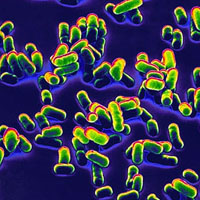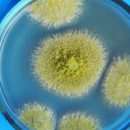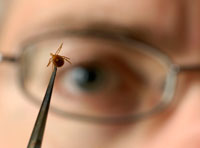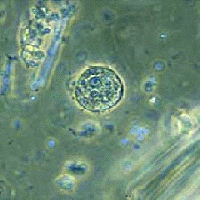Iraciniosis refers to the group of infectious diseases. The causative agent of the disease is Iracinium. Diseases begins from the moment of penetration of microorganism with food or water to the gastrointestinal tract. Iraciniosis begins acutely with increasing temperature and appearance of abdominal pain.
Content
The causative agent of Iersiniosis
 Iraciniosis - this infectious disease belonging to zoonoses. Zoonoses are infectious and parasitic animal diseases. In humans - infectious diseases, the source of pathogens of which are animals. There are 7 types of Iranse. Of these, pathogenic (i.e. dangerous) for humans are three types. This is the pathogen of the plague (Yersinia Pestis), the causative agent of pseudotuberculosis (Yersinia Pseudotuberculosis), the pathogen of intestinal Iraciniosis (Y. Enterocolitica).
Iraciniosis - this infectious disease belonging to zoonoses. Zoonoses are infectious and parasitic animal diseases. In humans - infectious diseases, the source of pathogens of which are animals. There are 7 types of Iranse. Of these, pathogenic (i.e. dangerous) for humans are three types. This is the pathogen of the plague (Yersinia Pestis), the causative agent of pseudotuberculosis (Yersinia Pseudotuberculosis), the pathogen of intestinal Iraciniosis (Y. Enterocolitica).
Irani has antigenic (gene) relationship with salmonellas, shgellas, echryochies, protics, as well as with cholera vibrium, pathogens of Tularemia and Brucellize.
Infectious disease Iraciniosis is named after. Yersen. The disease can flow under the guise of dysentery, hepatitis, scarletins, appendicitis, Qatar (inflammation) of the upper respiratory tract.
Microorganisms are very resistant to low temperature. In water at a temperature of 18-20 degrees, more than 40 days survive if the temperature drops to 4 degrees - 250 days live. Iracini can be maintained in food products (milk, bread), especially well persisted on fresh vegetables (carrots, apples) - up to 2 months. In feces in frozen state, preserved up to 3 months, and at room temperature - 7 days. Poor tolerate drying and heating. At temperatures above 60 degrees dying after 30 minutes, up to 100 degrees - die immediately.
Iracinium is sensitive to disinfectant solutions in working concentrations, to antibiotics from the Levomycetin group, aminoglycosides, tetracycline, cephalosporins. They are not sensitive to penicillin and erythromycin.
The mechanism of the occurrence and development of Iersiniosis
The disease begins acutely with increasing body temperature, the abdominal pain appears, diarrhea with blood and mucus. A person who fell into the body with food or water, the Iracini partially die in the acidic area of the stomach, the rest penetrate further into the intestine. The main pathological process develops in the small intestine. With sufficient virulence and sufficient pathogens, it is possible that their penetration on lymphatic vessels in the mesenteric lymphatic components and the development of mesenterial lymphadenit or meseadenite (meseadenite - inflammation of the lymph nodes of the splatter). In these cases, the heersiniosis takes place in gastrointestinal or abdominal form.
With high virulence (the ability to cause the development of the disease) of the Iranse and a decrease in the immunological reactivity of the body, bacteremia is developing (bacteria fall into the bloodstream), which manifests the spread of infection. The pathogen also penetrates organs and fabrics rich in lymphoid elements (liver, spleen, lymph nodes). In case of unfinished phagocytosis (that is, the incomplete destruction of the microorganism) of the Iracinium is circulated for a long time in the body, causing new foci of inflammation, of which the pathogen re-enters blood. As a result, a secondary-focal form with the defeat of any organ (heart, liver, joints, lungs), or exacerbations and relapses arise.
The allergic component, autoimmune processes are of great importance in the development of Iersiniosis (especially secondary focal form, exacerbation and relapses), which is manifested by testing (rashes), joints and arthritis pain.









